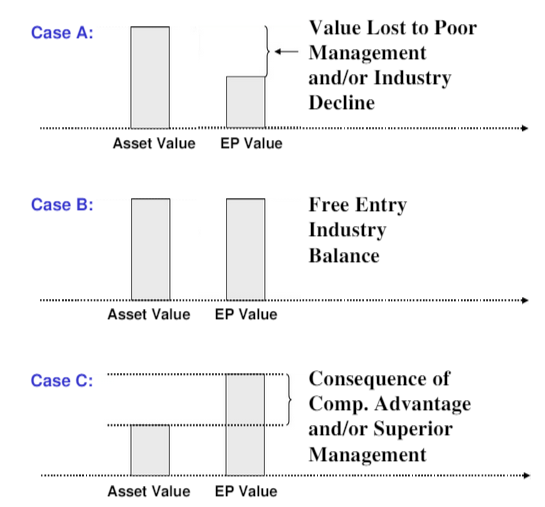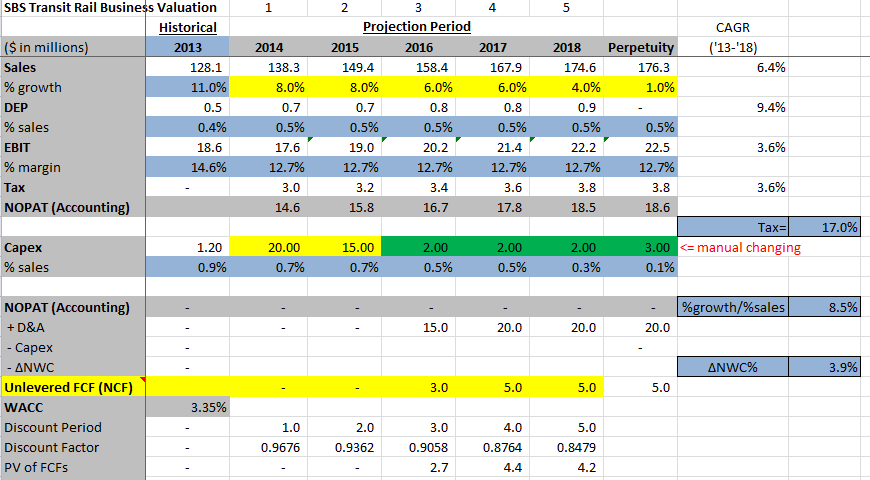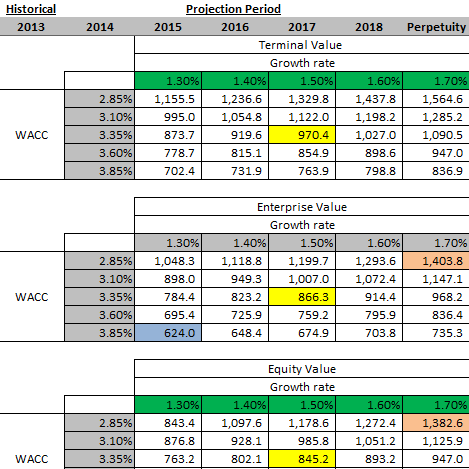Some people have stressed on referring to a few different metrics when analyzing a company. And they are rightly so.
In this part 3 sequel of the posts, I will share on one of the earnings valuation methodology favored by Bruce Greenwald which is best used in conjunction with the Reproduction Cost value method discussed in the previous post.
Just like how the balance sheet had to be adjusted in the Reproduction Cost method, the income statement had to be adjusted this time in the EPV (Earnings Power Value) method.
The EPV method of valuing earnings are constantly being debated and compared against the more known DCF (Discounted Cash Flow) and DDM (Dividend Discount Model) used across tertiaries and research house. The biggest difference amongst the 3 valuation methodology, as you will see later, is that the latter two takes into account future potential growth and earnings optimism while the EPV method doesn’t.
As mentioned previously, the EPV method is best used in conjunction with the Reproduction Cost method, and are suitable to value companies whose cash flows are more volatile and has a young history. So here we go.
The concept of EPV starts with EBIT and begin working through items to adjust from it.
1.) Consider historical trough or peak
The idea is to adjust historical EBIT or EBIT margins based on cyclical business conditions through volatile economic conditions during trough and peak and even them out. This is to ensure that you do not account only for a year of profitability.
2.) Adjust for one-off or extraordinary items
You need to add back any one-off cost or extraordinary items into the EBIT since this does not represent future earnings value. Similarly, any one-off income will need to be deducted from the EBIT.
3.) Add back SG&A and R&D expenses
Greenwald proposed adding back 25% of SG&A and R&D expenses into the EBIT.
The rationale for adding these items back is to account that these costs are expected to provide future earnings benefit to the company, so considering that the EPV method is ignoring terminal growth rate like what is used in DCF, 25% is used as a conservative figure.
4.) Add back Depreciation & Amortization
Greenwald proposed adding back 20-25% of Depreciation and Amortization expenses into the EBIT.
The amount of percentage to be added back depends on the type of accounting treatment used to depreciate the assets. Use this constantly when adding back the PPE on the Reproduction Cost method.
5.) Deduct Maintenance Capital Expenditure
Last but not least, deduct the average amount of maintenance CAPEX used to operate the business.
Once this is done, you get your adjusted EBIT figure and do the same by discounting* them to get your Net EPV.
*Rather than using WACC where you have to work out the CAPM based on specific beta, it will be easier to use a range of discounted rate for discounting purpose.
After you get your Net EPV, compare them with your Reproduction Cost value you have computed earlier. There would be 3 cases you would end up with.

Case A: Asset Value > EPV. In this case, the company has no moat, no strategic advantage, bad management and in a sunset industry.
Case B: Asset Value = EPV. In this case, the company has no moat and is in a competitive industry where companies are earning only their cost of capital. Free entry and exit barrier.
Case C: Asset Value < EPV. In this case, the company has a strong moat, brand recognition, good management and in a sunrise industry.
Comparison with DCF method
DCF method of valuing companies based on earnings is one of the most commonly used across analyst’s research house and education tertiaries. The reason why they are being commonly used is because of its simplicity to implement, but Greenwald thinks otherwise. He thinks there are ways too many assumptions and importance placed on future growth that makes the DCF rather unconservative. This is the very same reason why you always see analysts putting high target price for growth companies.
Another notable difference with the DCF method is probably that DCF requires consistent cashflow throughout the predictive nature of the business. This isn’t always the case, unless we are talking about companies with predictable recurring income.
In case anyone out there wants a comprehensive template for computing the DCF method, you can contact me at my personal email and I will send you the file. The template is comprehensive as it covers a whole range of additional things such as sensitivity risk of WACC and growth rate, inflation, ROI and plowback ratio. They are done during one of the classes in my MBA program. Here’s a preview below.


Conclusion
There are no one fits all type of valuation methodology.
The DCF is still one of the most commonly and easiest to use across earnings valuations methodology. If you are uneasy about putting future growth expectations on DCF methodology, you can either increase the discount rate or use a reverse DCF methodology to find out the current market growth expectations based on current price.
If I were to choose, I’ll probably use the lower of the two method for conservative purpose when analyzing a company. Again, the devils is always in the detail you put in.
What about you? Which type of earnings valuation do you prefer and why?


wow see until i become blur, u have went to another level "zui gao jing jie"
Hi jfree
No la, don't dare to claim the zen up there.
Actually it's not that difficult to understand, just another form of earnings valuation with more variable factors to consider 🙂
Hi B,
Wow, your DCF template is really complicated lol! If you can predict to this kind of exactness, then the output will be exact…but that's the point isn't it? I'm always scared of GIGO – garbage in garbage out. In engineering models, there's plenty of those and just a small 1 decimal place difference can create a world of difference.
So I subscribe to Occam's razor – the simplest method should suffice. Reverse DCF is good, as it relieves the model of the difficulties of prediction and lets you see if you're willing to buy at current price with these reversed engineered assumptions.
Coincidence? I posted the dividends discounted model (DDM) and you did this part. I prefer DDM because of the lesser number of inputs you need and dividends are more certain (you'll see it in your bank) than FCF and earnings. Anyway, these models are just rule of thumbs, never the end point.
With that in mind, I'll probably do a very simplified version of DCF or even PE multiple. Anything more adds accuracy to the figures but no more certainty to the figures!
Hi LP
Actually the DCF template isn't complicated at all. The formula is all there, so just plug a few important factors and they will compute automatically. Professors love how you did the "if this then… if that then…" 😀
The template merely adds in more variable factors to consider but the precision isn't the key things to note here. After all, valuations is a piece of art that is subjective anyway.
Saw your DDM model, I think we are getting a nearer telepathy sooner or later 😉
Hi B, I do Reverse DCF.
I usually play around with the assumptions and check the corresponding value.
I also do the same for the competitors.
To be conservative, I take av. fCf of company with history of at least a decade. I take out outlayers years. To be prudent, outlayers is 1 for exceptional poor FCf … Negative … Also take out exceptional high FCF. The average should not be higher than recent high.
If FcF show more than 2 years of negative FCf, I will usually just give DCF a miss.
If FCF is too volatile, I also give it a miss.
But I start to do less quantative analysis now.
I simply decide if there is a moat, what is the growth and yield? Is the balance sheet strong with consistent FCF and profits resilience…
I ask myself from the yield, is there opportunity of growth and. How sustainable it is and how long can I milk it? If it value half, do I still dare to buy?
Hi Sillyinvestor
Reverse DCF is a good way to get market expectations on current growth rate based on current price and earnings. They eliminate the need to forecast on the growth figure.
For FCF that are volatile like you said, I don't usually use DCF to decide. They are not accurate to begin with and even more so if you added in more unknown variables inside.
Sometimes, it is much easier to use a few of the ratio behind such as EV/EBITDA or P/FCF to decide on things.
We are fellow human investor, not analysts 🙂
*I saw your message and will send you the template tomorrow
eToro is the ultimate forex trading platform for new and pro traders.